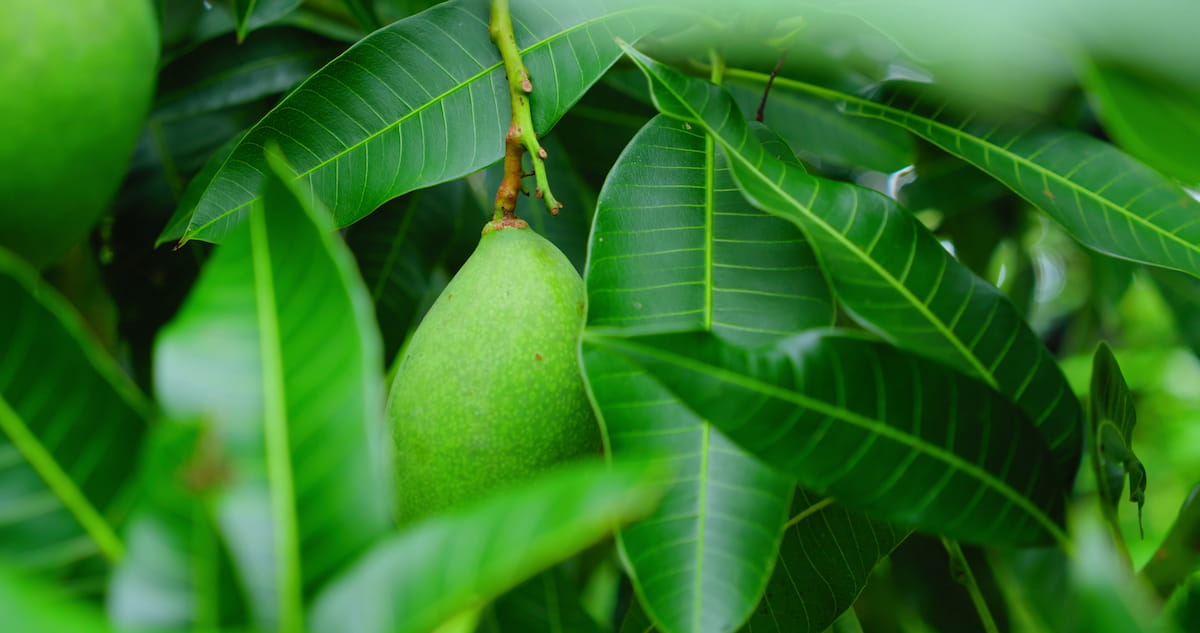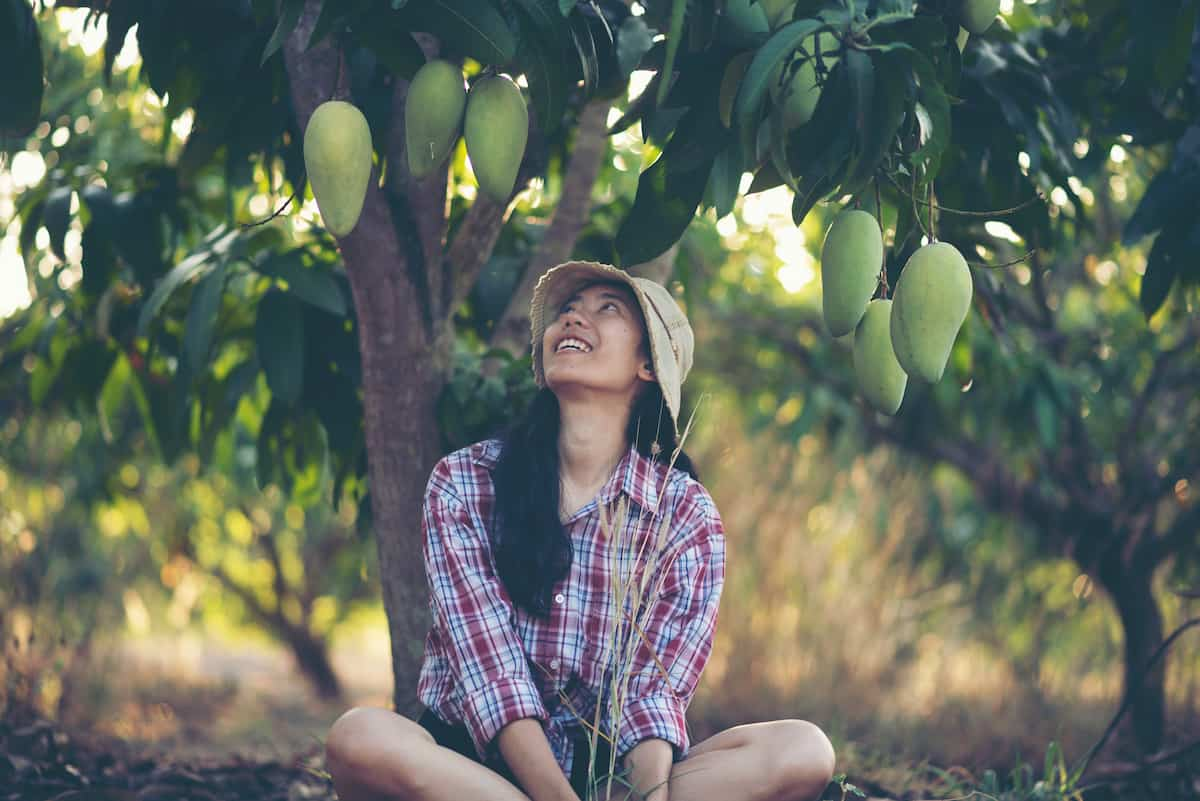Mango Spongy Tissue or Soft Nose is a complex physiological disorder affecting mango crops’ productivity and profitability. Mango Spongy Tissue is a postharvest disorder that affects the internal quality of the fruit, resulting in the development of spongy tissue in the flesh of the mango. This disorder can cause significant economic losses for mango growers and exporters due to the reduced quality and marketability of the fruit. This makes the fruit unappealing to consumers, resulting in significant losses for growers and exporters.

It has been reported in many mango-growing regions, including Asia, Africa, Australia, and the Americas. Various methods have been proposed to prevent or reduce the incidence of mango spongy tissue disorder, including orchard management practices, preharvest and postharvest treatments, and genetic improvement of mango cultivars. Understanding the underlying causes of spongy tissue and developing effective management strategies are essential for sustaining mango production and ensuring the long-term viability of this important crop.
Mango Spongy Tissue and Black Tip Disorders Management
Characteristics of Mango Spongy Tissue Disorder
- The affected fruits are characterized by spongy, fibrous tissue in the flesh, often accompanied by off-flavors, low sugar content, and reduced nutritional value.
- It is the development of an inedible, sour, and yellow spongy patch in the mesocarp tissues of the fruit during ripening.
- The fruits have a bad odor and are not fit for consumption.
- The external appearance of the fruit is normal. The disorder can be identified only after cutting the fruit.
- It exclusively occurs in Alphonso mango varieties.
- It resembles bacterial rot symptoms in extreme conditions.
Causes of Mango Spongy Tissue Disorder Development
- The exact cause of MST is still unclear, but it is believed to be associated with various environmental factors, such as temperature, humidity, light, and water stress.
- The inactivation of ripening enzymes at the fruit maturation stage is due to high temperatures and convective heat.
- The exposure of the fruits to sunlight after harvesting will also develop spongy tissues.
- Over-application of nitrogen fertilizers.
- Fruits with low calcium content are also prone to this disorder.
Favorable Conditions of Mango Spongy Tissue Disorder
- The disorder is more prevalent in areas with high temperatures and humidity and is more common in late-maturing mango varieties.
- High temperatures above 30°C during fruit development and ripening can break down the fruit’s cell walls, leading to spongy tissue development.
- Excess moisture in the air can lead to water accumulation in the fruit, making it more susceptible to fungal and bacterial infections.
- Water stress during fruit development and ripening can reduce nutrient uptake and hinder cell division, resulting in the development of spongy tissue.
- Late-maturing mango varieties have a longer period to develop and are exposed to unfavorable environmental conditions for a longer time.
- Excessive use of nitrogen fertilizers can lead to the rapid growth of fruit, leading to reduced cell division and the development of spongy tissue.
Management Measures of Mango Spongy Tissue Disorder
- Harvest the fruits when they are 75% matured.
- Expose the fruits to low temperatures of 10-15°C for 12-18 hours after harvesting.
- Use windbreaks to protect the orchards from exposure to warm winds in May.
- Dip the fruits in calcium solution once or twice before harvesting to prevent calcium deficiency in the ripe fruits.
- Use sod culture and mulching techniques.
- Grow cover crops like legumes to reduce incidence.
- Spray Calcium fertilizers like calcium ammonium nitrate.
- Use Resistant varieties like Arka Puneet, Arka Aruna, and Ratna.
In case you missed it: Mango Gummosis Disease Management: Symptoms, Treatment, Chemical, Biological, Natural, and Organic Control

Mango Black Tip
Mango Black Tip is a physiological disorder that affects mango crop quality and yields. It is a postharvest disorder that affects the quality and marketability of the fruit, resulting in significant economic losses for mango growers and exporters. It can significantly impact the quality and yield of the mango crop, leading to economic losses for mango farmers. It has been reported in many mango-growing regions, including Asia, Africa, Australia, and the Americas.
Effective strategies like fungicides, proper orchard management practices, appropriate postharvest handling techniques, and genetic improvement of mango cultivars provide a long-term solution to reduce the black tip incidence. Understanding the underlying causes of black tip and developing effective management strategies are essential for sustaining mango production and ensuring the long-term viability of this important crop.
Characteristics of Mango Black Tip Disorder
- The affected fruits are characterized by black, depressed necrotic lesions restricted to the tip of the fruit, which gradually spread to the adjacent areas of the fruit.
- This disorder can occur at any stage of fruit development, but it is commonly observed in mature and ripe fruits.
- In severe cases, the fruit may become unsuitable for consumption or processing.
- The distal end of the fruit becomes polluted by the accumulation of smoke, ethylene, carbon monoxide, carbon dioxide, sulfur dioxide, and acetylene.
- The fruits become soft after premature ripening, never mature completely, and drop early.
Causes of Mango Black Tip Disorder Development
- The exact cause of MBT is still unclear, but it is believed to be associated with various environmental factors, such as temperature, humidity, and cultural practices.
- Brick kilns cause this disorder present nearby the orchards.
- Exposure to toxic gases like CO, CO2, SO2, ethylene, and acetylene causes the disorder.
Favorable Conditions of Mango Black Tip Disorder
- High temperature and humidity during fruit development, mechanical injury, and fungal infection contribute to the development of black tip disorder.
- High rainfall and cloudy weather conditions create an ideal environment for the disorder.
- The use of high levels of nitrogen fertilizers, excessive pruning, and improper harvesting techniques also increase the risk of black tip disorder.
- It is more common in mango trees deficient in certain nutrients such as calcium, magnesium, and boron. These nutrients play a critical role in fruit development.
- The disorder is commonly observed in young mango trees under five years of age.
- Pests such as fruit flies and mealybugs can damage the fruit, making it more susceptible.
Management Measures of Mango Black Tip Disorder
- Use tolerant varieties like Lucknow Safeda.
- It can be controlled by elevating the chimneys to 20m.
- Spray borax at fortnight intervals from the fruit set stage.
- Spray sodium carbonate and borax before flowering, after flowering, and at the fruit set stage.
- Spray Bordeaux mixture from the pea-sized stage of fruits at 20 days intervals until the fruits mature completely.
In case you missed it: Mango Decline Disease Management: Symptoms, Treatment, Chemical, Biological, and Organic

- Deworming Schedule for Dogs/Puppies: A Beginners Guide
- How to Prevent and Control Parasites in Goats
- Beneficial Insects in Pest Management
- Natural Solutions for Pest Control in Flower Gardens
- Types of Fungicides Used in Agriculture
- Common Issues in the Fruit Development Stage of Pomegranate Farming
- Fruit Development Issues in Papaya: Easy Solutions and Treatment
- Soil-Borne Diseases and How to Protect Your Plants
- Practices to Prevent Disease Spread in the Garden